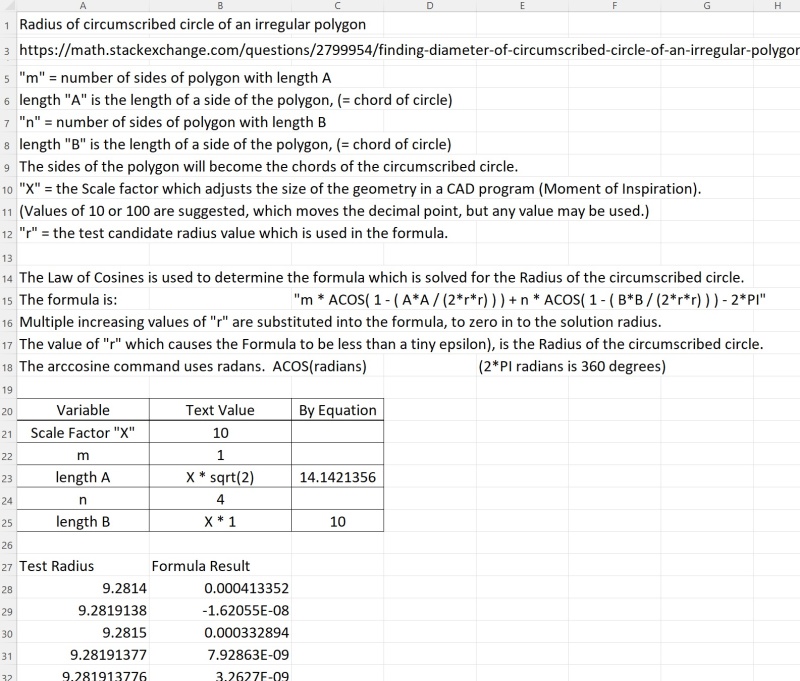I dd an Excel spreadsheet to calculate the Radius, semi-manually.
A scale of X = 10 was used.
MoI seems to allow a setting of 7 decimal places.
Note: A scale of 1000 with 7 decimals does not seem to work well in MoI, as far as snaps and intersection went. (?)
At X=10, the best Radius, limited to 7 decimals, was 9.2819138 units
In Excel, the error was -1.61E-8
A more precise Radius, with 13 decimals, was 9.2819137798526, with error of 2.50733E-12, BUT I think that this value is unusable in MoI (?)
At X=100, the best Radius, limited to 7 decimals, was 92.8191378, with error of -1.16072E-10.
So there is not a "Perfect" solution, with the number of decimal that can be used. The radius value might be transcendental.
The Excel formula in cell B29, which references the variable values, for Radius cell A29, is:
=$B$22*ACOS(1 - $C$23*$C$23/(2*A29*A29))+$B$24*ACOS(1-$C$25*$C$25/(2*A29*A29))-(2*PI())
The Excel spreadsheet is attached, and with a little practice, anyone can build one. Spelling error, radans should be radians. (ACOS() uses radians not degrees of angle.
I learned the rudiments of Excel many years ago.
- Brian
So the puzzle can be built in MoI, using the "best" radius of 7 decimals, at X = 10, or X = 100.
